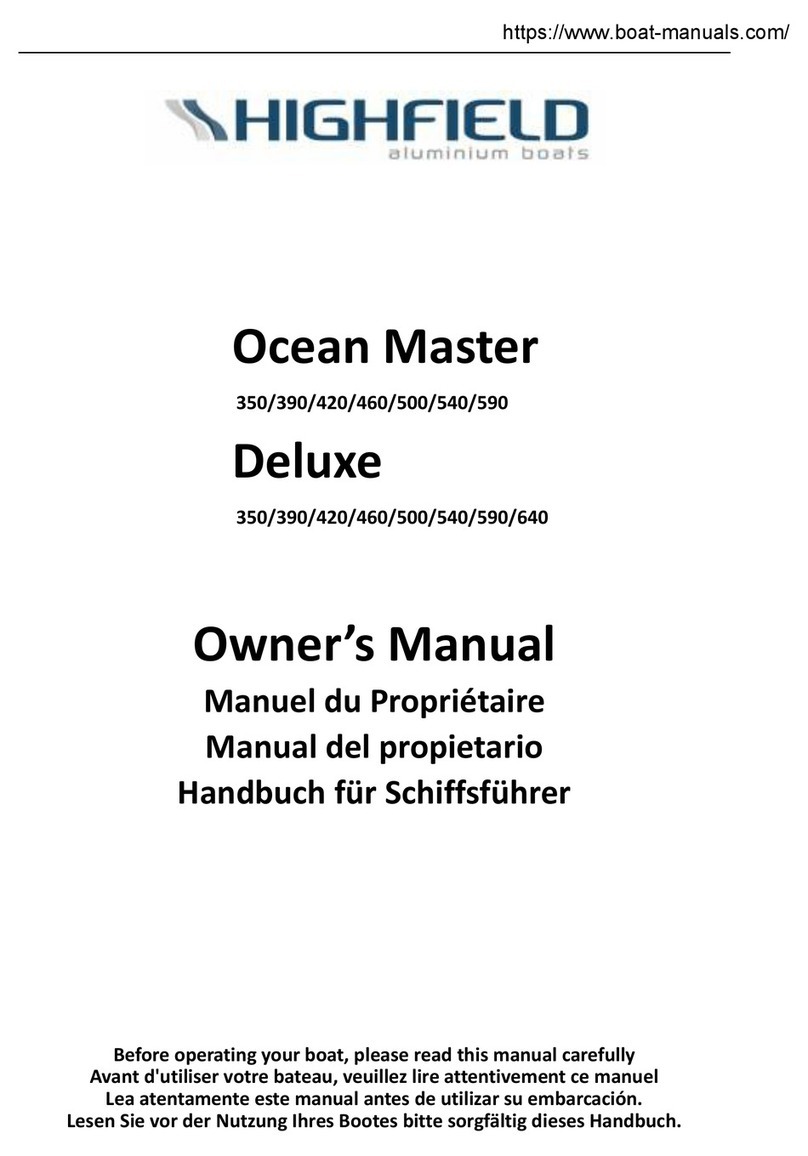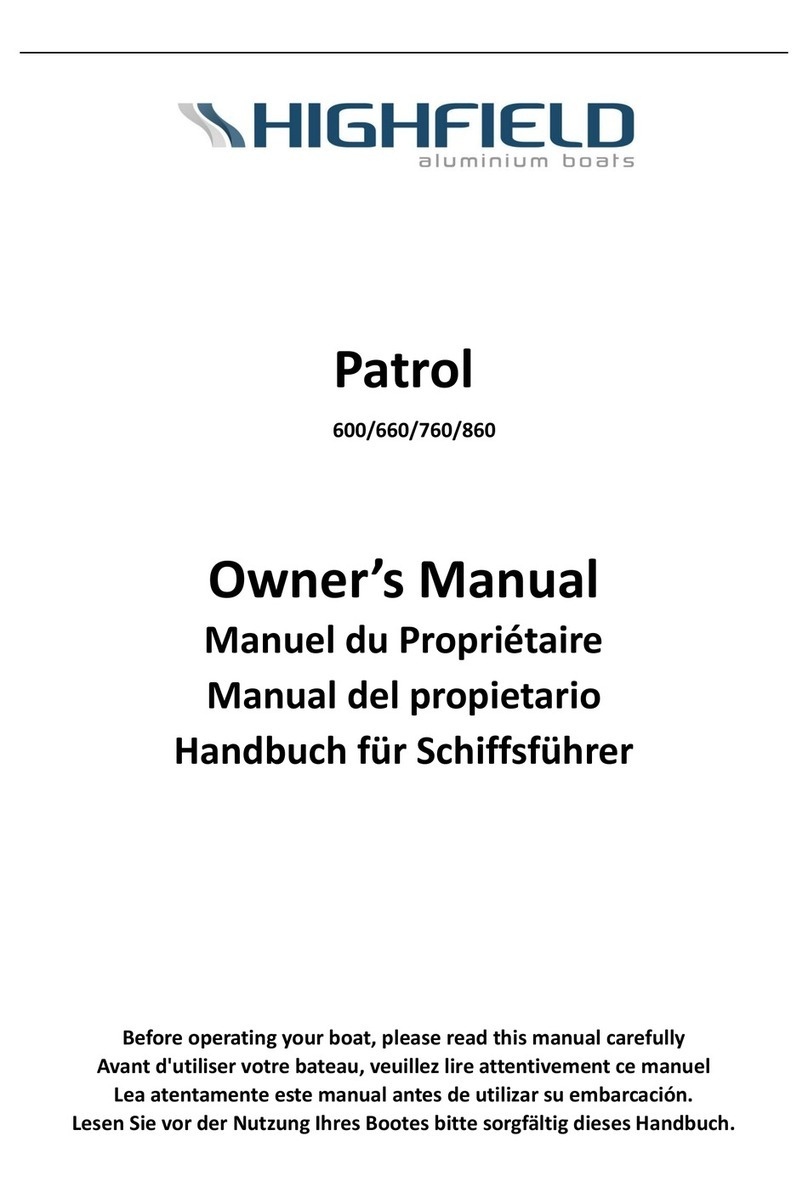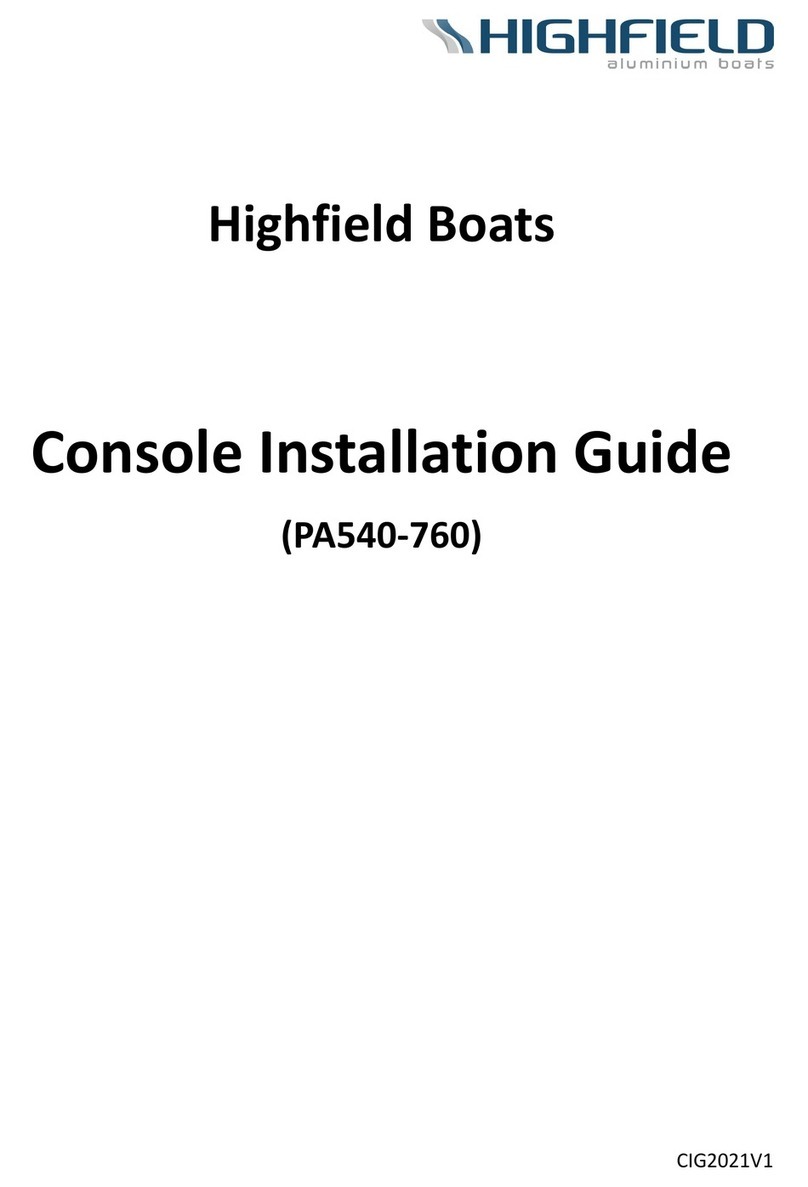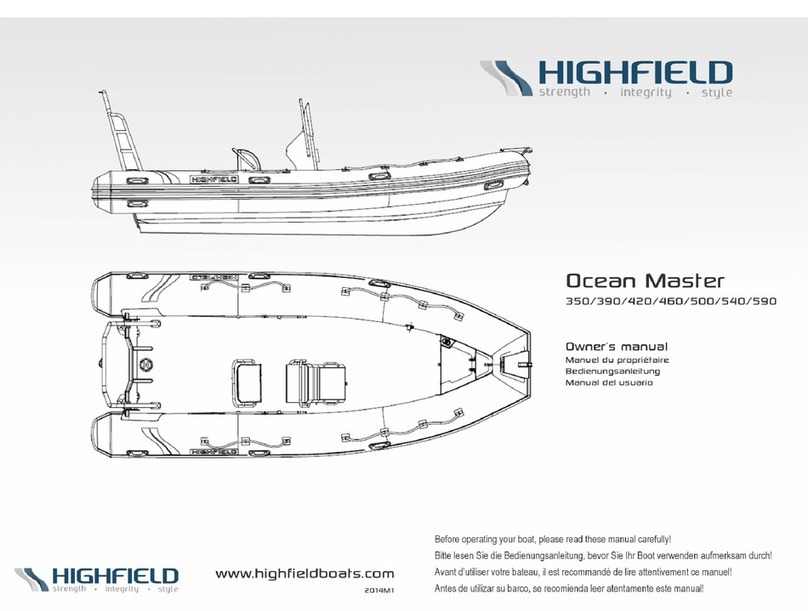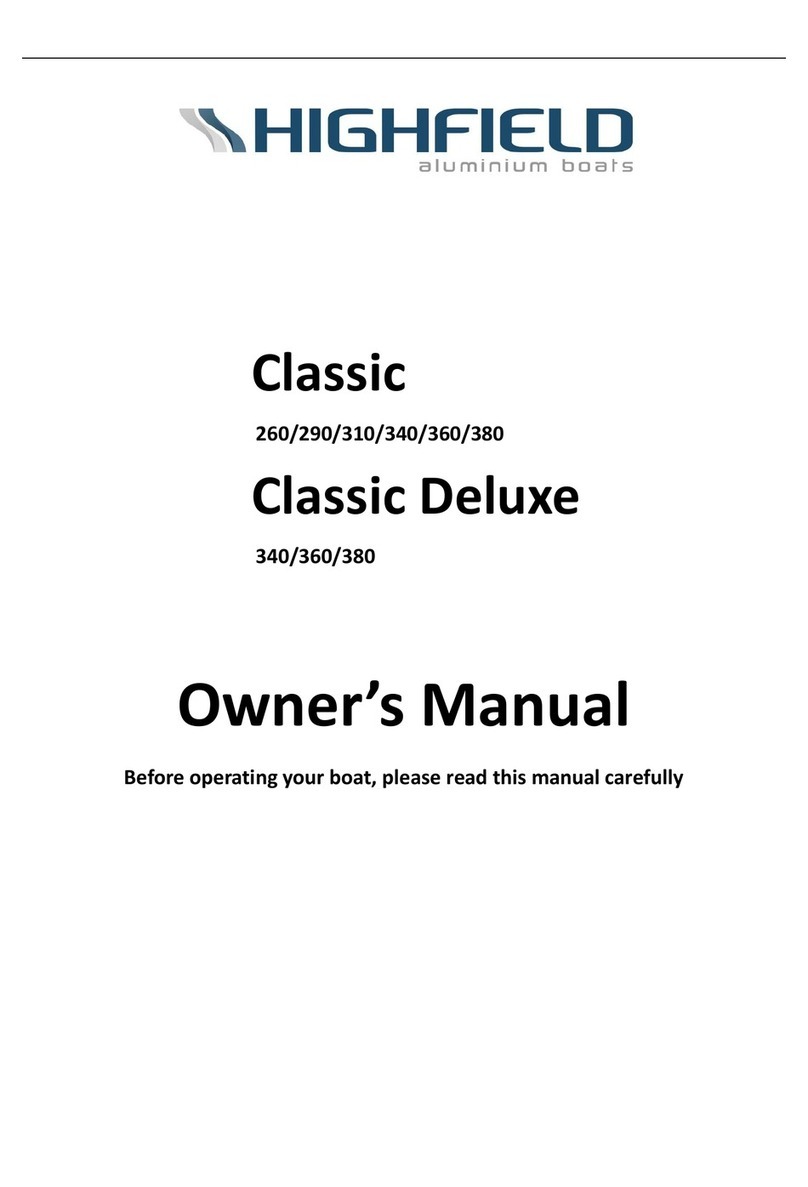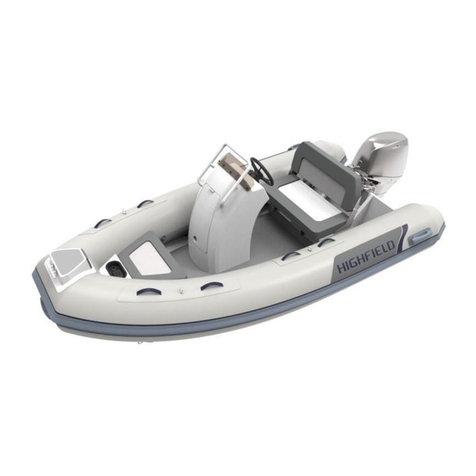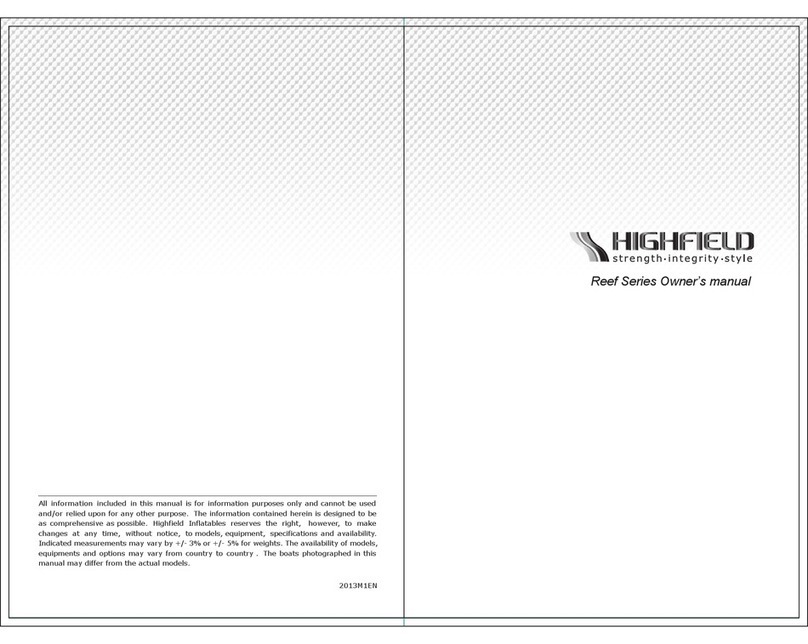
To ensure that you gain maximum satisfaction from your Highfield boat, please
read this Owner’s Manual carefully. It contains all the safety and operation
instructions that you need to get the most out of your new Highfield.
General Introduction
This manual has been compiled to help you to operate your boat with safety and pleasure. It contains
details of the boat; the equipment supplied or fitted; its systems and information on their operation. Please read
it carefully, and familiarize yourself with the boat before using it.
This owner's manual is not a course on boating safety or seamanship. If this is your first boat, or if you are
changing to a type of boat you are not familiar with, for your own comfort and safety, please ensure that you
obtain handling and operating experience before “assuming command” of the boat. Your dealer or national
sailing federation or yacht club will be pleased to advise you of local sea schools, or competent instructors.
Ensure that the anticipated wind and sea conditions will correspond to the design category of your boat,
and that you and your crew are able to handle the boat in these conditions.
Even when your boat is categorized for them, the sea and wind conditions corresponding to the design
categories A, B and C range from severe storm conditions for category A, to strong conditions for the top of
category C, open to the hazards of a freak wave or gust. These are therefore dangerous conditions, where only a
competent, fit and trained crew using a well maintained boat can satisfactorily operate.
This owner's manual is not a detailed maintenance or trouble-shooting guide. In the case of difficulty, refer
to the boat builder or his representative. If a maintenance manual is provided, use it for the boat's maintenance.
Always use trained and competent people for maintenance, fixing or modifications. Modifications that may
affect the safety characteristics of the boat shall be assessed, executed and documented by competent people.
The boat builder cannot be held responsible for modifications that he has not approved.
In some countries, a driving license or authorization is required, or specific regulations are in force.
Always maintain your boat properly and make allowance for the deterioration that will occur in time and as
a result of heavy use or misuse of the boat.
Any boat, no matter how strong it may be, can be severely damaged if not used properly. This is not
compatible with safe boating. Always adjust the speed and direction of the boat to sea conditions.
If your boat is fitted with a life raft, carefully read its operating manual. The boat should have onboard the
appropriate safety equipment (lifejackets, harness, etc.) according to the type of boat, weather conditions, etc.
This equipment is mandatory in some countries. The crew should be familiar with the use of all safety equipment
and emergency maneuvering (man overboard recovery, towing, etc.), sailing schools and clubs regularly organize
drill sessions.
All persons should wear a suitable buoyancy aid (life jacket/personal floatation device) when on deck. Note
that, in some countries, it is a legal requirement to wear a buoyancy aid that complies with their national
regulations at all times.





















